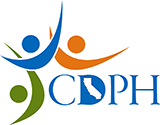
California Department of Public Health Requirements for Visitors in Acute Health Care and Long-Term Care Settings
State Public Health Officer Order of August 5, 2021
The COVID-19 pandemic remains a significant challenge in California. COVID-19 vaccines are effective in reducing infection and serious disease. At present, 63% of Californians 12 years of age and older are fully vaccinated with an additional 10% partially vaccinated. California is currently experiencing the fastest increase in COVID-19 cases during the entire pandemic with 18.3 new cases per 100,000 people per day, with case rates increasing ninefold within two months. The Delta variant, which is very highly contagious and possibly more virulent, is currently the most common variant causing new infections in California.
Unvaccinated persons are more likely to get infected and spread the virus, which is transmitted through the air. Most current hospitalizations and deaths are among unvaccinated persons. Thanks to vaccinations and to measures taken since March 2020, California’s health care system is currently able to address the increase in cases and hospitalizations. However, additional statewide facility-directed measures are necessary to protect particularly vulnerable populations. Hospitals, skilled nursing facilities (SNFs), and intermediate care facilities (ICFs) serve uniquely vulnerable populations where COVID-19 outbreaks can have severe consequences including hospitalization, severe illness, and death.
Vaccinations have been available in California from December 2020 to the present, and from January 1, 2021, to July 27, 2021, a total of 9,371 confirmed COVID-19 outbreaks and 113,196 outbreak-related cases were reported to CDPH. The two most common settings for these outbreaks were: Residential care facilities (22.5%) and SNFs (9.8%). There have been over 4,000 outbreaks in residential care facilities, over 2,000 outbreaks in SNFs, and over 450 outbreaks in hospitals in California to date. Recent outbreaks in health care settings have frequently been traced to unvaccinated staff members, demonstrating the risk of unvaccinated persons in these settings.
While there is currently a significant increase in the community transmission of COVID-19 in California, vaccination against COVID-19 is the most effective means of preventing further infections, transmission, and outbreaks. As we respond to the dramatic increase in cases, transmission prevention measures must be increased for the protection of the patients in the facilities referenced in this Order. This can be done by reducing the risk that visitors to these facilities are bringing COVID-19 from the community and introducing it into these settings. Requiring well-fitting face masks for all visitors is an important step for source control. An emphasis on vaccination and testing should also contribute to the reduction of transmission risk in these high-risk settings.
COVID-19 remains a concern to public health and, in order to prevent its further spread in hospitals, SNFs, and ICFs, the following limited and temporary public health requirements are necessary at this time.


